GE JBS05, JBS23, RB502, RB557, LEB116 Owner’s Manual
...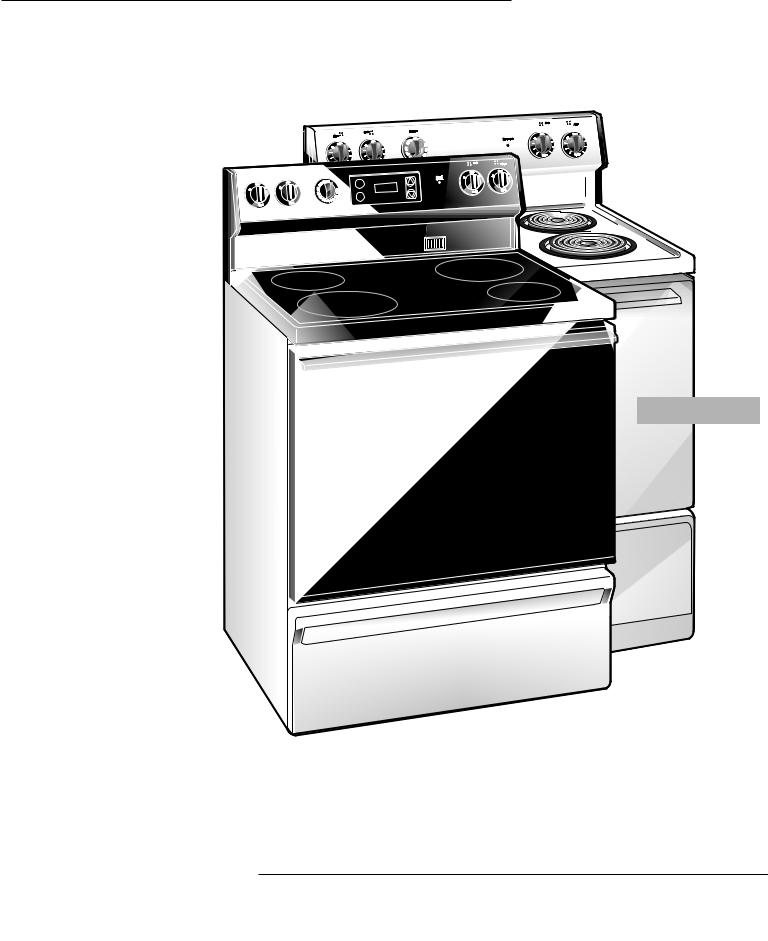
<![endif]>RangesElectric
Owner’s Manual
Models:
JBS02
JBS05
JBS23
RB502
RB557
LEB116
LEB131
Part No. 164D3333P133 Pub. No. 49-8898 12-98 CG
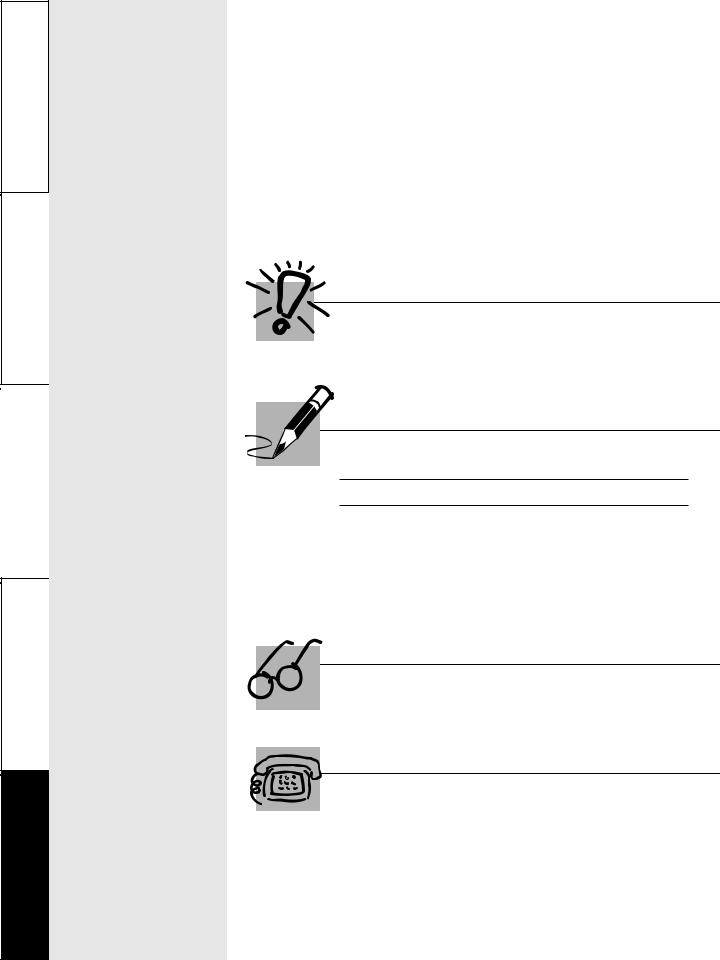
<![endif]>Customer Service Troubleshooting Tips Care and Cleaning Operating Instructions Safety Instructions
Safety Information
Anti-Tip Device . . . . . . . . . . . . 3
Safety Precautions . . . . . . . 3, 4
Surface Cooking Units . . . . . . . 5
Radiant Surface Units . . . . . . . 6
Oven . . . . . . . . . . . . . . . . . . . 6, 7
Preparation . . . . . . . . . . . . . . . 7
Operating Instructions
Using the Surface Units . . . 8, 9
Using the Clock & Timer . . . . 10
Using the Oven . . . . . . . . 11, 12
Oven Thermostat . . . . . . . . . . 13
Care and Cleaning
Broiler Pan & Grid . . . . . . . . . 14
Lift-Off Oven Door . . . . . . . . . 15
Lift-Up Cooktop . . . . . . . . . . . 15
Surface Units . . . . . . . . . . . . . 16
Glass Cooktop . . . . . . . . . . . . 17
Porcelain Oven Interior . . . . . 18
Anti-Tip Device . . . . . . . . . . . 18
Troubleshooting Tips
Before You Call
For Service . . . . . . . . . . . . 19, 20
Customer Service
Product Registration . . . . . . . 21
Warranty . . . . . . . . . . . . . . . . 23
Service Telephone
Numbers . . . . . . . . . Back Cover
2
Congratulations!
You Are Now Part of Our Family.
Welcome to the family. We’re proud of our quality products and we are committed to providing dependable service. You’ll see it in this easy-to-use Owner’s Manual and you’ll hear it in the friendly voices of our customer service department.
Best of all, you’ll experience these values each time you use your range. That’s important, because your new range will be part of your family for many years. And we hope you will be part of ours for a long time to come.
We thank you for buying our product. We appreciate your purchase, and hope
you will continue to rely on us whenever you need quality appliances for your home.
A Service Partnership.
IMPORTANT!
Fill out and return the Consumer Product Registration Card that is packed with this product. If you cannot find it, please send in the duplicate card printed in the back of this manual.
FOR YOUR RECORDS
Write the model and serial numbers here:
#
#
You can find them on a label on the front of the range behind the storage drawer.
Staple sales slip or cancelled check here.
Proof of the original purchase date is needed to obtain service under the warranty.
READ THIS MANUAL
Inside you will find many helpful hints on how to use and maintain your range properly. Just a little preventive care on your part can save you a great deal of time and money over the life of your range.
IF YOU NEED SERVICE
You’ll find many answers to common problems in the Before You Call For Service section. If you review our chart of Troubleshooting Tips first, you may not need to call for service at all.
If you do need service, you can relax knowing help is only a phone call away. A list of toll-free customer service numbers is included in the back section of this manual. Or you can always call the GE Answer Center® at 800.626.2000, 24 hours a day, 7 days a week.
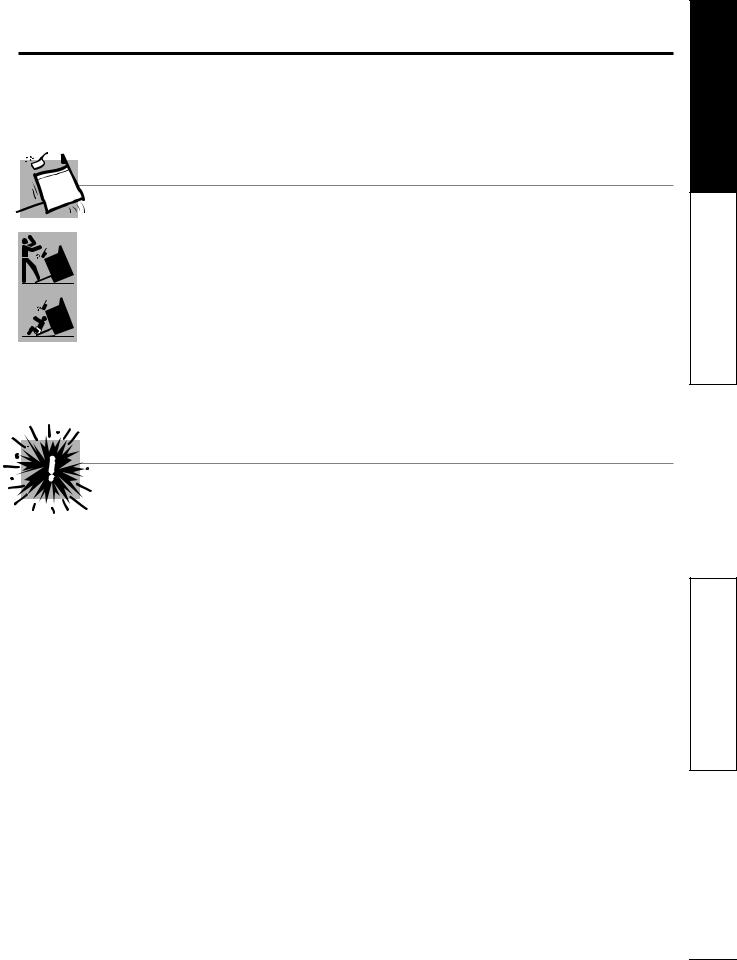
IMPORTANT SAFETY INFORMATION.
READ ALL INSTRUCTIONS BEFORE USING.
 WARNING!
WARNING!
For your safety, the information in this manual must be followed to minimize the risk of fire, electric shock, or to prevent property damage, personal injury, or loss of life.
 WARNING ANTI-TIP DEVICE
WARNING ANTI-TIP DEVICE
All ranges can tip and injury could result.
To prevent accidental tipping of the range, attach it to the wall and floor by installing the Anti-Tip device supplied.
To check if the device is installed and engaged properly, remove the kick panel or storage drawer and inspect the rear leveling leg. Make sure it fits securely into the slot.
If you pull the range out from the wall for any reason, make sure the device is properly engaged when you push the range back against the wall. If it is not, there is a possible risk of the range tipping over and causing injury if you or a child stand, sit or lean on an open door.
Please refer to the Anti-Tip device information in this manual. Failure to take this precaution could result in tipping of the range and injury.
 SAFETY PRECAUTIONS
SAFETY PRECAUTIONS
When using electrical appliances, basic safety precautions should be followed, including the following:
■Use this appliance only for its intended purpose as described in this Owner’s Manual.
■Be sure your appliance is properly installed and grounded by a qualified installer in accordance with the provided installation instructions.
■Have the installer show you the location of the circuit breaker or fuse. Mark it for easy reference.
■Do not attempt to repair or replace any part of your range unless it is specifically recommended in this manual. All other servicing should be referred to a qualified technician.
■Before performing any service, disconnect the range power supply at the household distribution panel by removing the fuse or switching off the circuit breaker.
■Do not leave children alone—children should not be left alone or unattended in an area where an appliance is in use. They should never be allowed to sit or stand on any part of the appliance.
■Do not store flammable materials in an oven or near the cooktop.
■Do not allow anyone to climb, stand or hang on the door, storage drawer or cooktop. They could damage the range and even tip it over, causing severe personal injury.
■CAUTION: Items of interest to children should not be stored in cabinets above a range or on the backsplash of a range— children climbing on the range to reach items could be seriously injured.
■Never wear loose-fitting or hanging garments while using the appliance. Be careful when reaching for items stored over the range. Flammable material could be ignited if brought in contact with hot surface units or heating elements and may cause severe burns.
■Use only dry pot holders—moist or damp pot holders on hot surfaces may result in burns from steam. Do not let pot holders touch hot surface units or heating elements. Do not use a towel or other bulky cloth in place of potholders.
■Teach children not to play with the controls or any other part of the range.
3
<![endif]>Service Customer Tips Troubleshooting Cleaning and Care Instructions Operating Instructions Safety

<![endif]>Customer Service Troubleshooting Tips Care and Cleaning Operating Instructions Safety Instructions
IMPORTANT SAFETY INFORMATION. READ ALL INSTRUCTIONS BEFORE USING.
 WARNING!
WARNING!
 SAFETY PRECAUTIONS
SAFETY PRECAUTIONS
■For your safety, never use your appliance for warming or heating the room.
■Do not let cooking grease or other flammable materials accumulate in or near the range.
■Never leave jars or cans of fat dripping in or near your range.
■Keep the hood and grease filters clean to maintain good venting and to avoid grease fires.
■Do not use water on grease fires. Never pick up a flaming pan. Turn the controls off. Smother a flaming pan on a surface unit by covering the pan completely with a well-fitting lid, cookie sheet or flat tray. Use a multi-purpose dry chemical or foam-type fire extinguisher.
Flaming grease outside a pan can be put out by covering it with baking soda or, if available, by using a multi-purpose dry chemical or foam-type fire extinguisher.
Flame in the oven can be smothered completely by closing the oven door and turning the oven off or by using a multipurpose dry chemical or foam-type fire extinguisher.
■Do not touch the surface units, the heating elements or the interior surface of the oven. These surfaces may be hot enough to burn even though they are dark in color. During and after use, do not touch, or let clothing or other flammable materials contact, the surface units, areas nearby the surface units or any interior area of the oven; allow sufficient time for cooling first.
Potentially hot surfaces include the cooktop, areas facing the cooktop, oven vent opening, surfaces near the opening, crevices around the oven door and metal trim parts above the door.
REMEMBER: The inside surface of the oven may be hot when the door is opened.
■Do not store or use combustible materials, gasoline or other flammable vapors and liquids in the vicinity of this or any other appliance.
■Always keep dish towels, dish cloths, pot holders and other linens a safe distance from your range.
■Always keep wooden and plastic utensils and canned food a safe distance from your range.
■Always keep combustible wall coverings, curtains or drapes a safe distance from your range.
COOK MEAT AND POULTRY THOROUGHLY…
Cook meat and poultry thoroughly—meat to at least an INTERNAL temperature of 160°F. and poultry to at least an INTERNAL temperature of 180°F. Cooking to these temperatures usually protects against foodborne illness.
4

 SURFACE COOKING UNITS
SURFACE COOKING UNITS
Use proper pan size—select cookware having flat bottoms large enough to cover the surface unit heating element. The use of undersized cookware will expose a portion of the surface unit to direct contact and may result in ignition of clothing. Proper relationship of cookware to surface unit will also improve efficiency.
■Never leave the surface units unattended at high heat settings. Boilovers cause smoking and greasy spillovers that may catch on fire.
■Do not use aluminum foil to line the drip pans or anywhere in the oven except as described in this manual. Misuse could result in a shock, fire hazard or damage to the range.
■Be sure the drip pans and the vent duct are not covered and are in place. Their absence during cooking could damage range parts and wiring.
■Only certain types of glass, glass ⁄ceramic, earthenware or other glazed containers are suitable for cooktop service; others may break because of the sudden change in temperature.
■To minimize the possibility of burns, ignition of flammable materials and spillage, the handle of a container should be turned toward the center of the range without extending over nearby surface units.
■Always turn the surface units off before removing cookware.
■Do not immerse or soak the removable surface units. Do not put them in a dishwasher. Do not self-clean the surface units in the oven.
■When flaming foods under the hood, turn the fan on.
■To avoid the possibility of a burn or electric shock, always be certain that the controls for all surface units are at the OFF position and all coils are cool before attempting to lift or remove a unit.
■Clean the cooktop with caution. If a wet sponge is used to wipe spills on a hot cooktop, be careful to avoid steam burns.
■Keep an eye on foods being fried at high or medium high heat settings.
■Foods for frying should be as dry as possible. Frost on frozen foods or moisture on fresh foods can cause hot fat to bubble up and over the sides of the pan.
■Use little fat for effective shallow or deep fat frying. Filling the pan too full of fat can cause spillovers when food is added.
■If a combination of oils or fats will be used in frying, stir together before heating, or as fats melt slowly.
■Always heat fat slowly, and watch as it heats.
■Use a deep fat thermometer whenever possible to prevent overheating fat beyond the smoking point.
■Carefully watch for spillovers or overheating of foods when frying at high or medium high temperatures.
■Never try to move a pan of hot fat, especially a deep fat fryer. Wait until the fat is cool.
■Do not allow water, other liquids or grease to remain on the cooktop or the control panel.
5
<![endif]>Service Customer Tips Troubleshooting Cleaning and Care Instructions Operating Instructions Safety
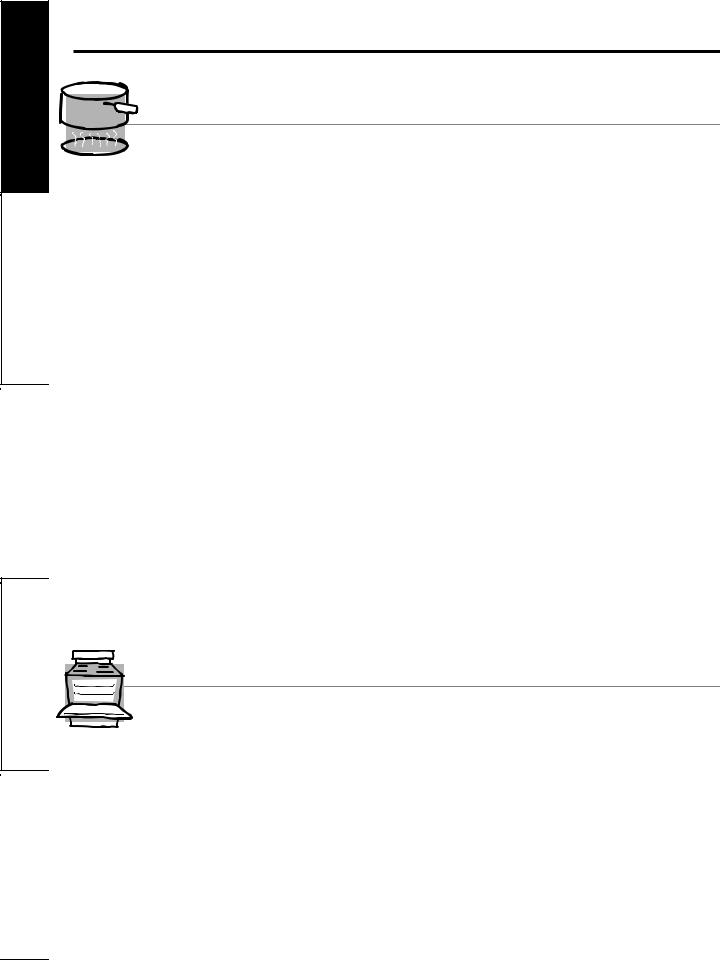
<![endif]>Customer Service Troubleshooting Tips Care and Cleaning Operating Instructions Safety Instructions
IMPORTANT SAFETY INFORMATION.
READ ALL INSTRUCTIONS BEFORE USING.
 WARNING!
WARNING!
RADIANT SURFACE UNITS
Use care when touching the cooktop. The glass surface of the cooktop will retain heat after the controls have been turned off.
■Avoid scratching the glass cooktop. The cooktop can be scratched with items such as sharp instruments, rings or other jewelry and rivets on clothing.
■Do not operate the radiant surface units if the glass is broken. Spillovers or cleaning solution may penetrate a broken cooktop and create a risk of electrical shock.
Contact a qualified technician immediately should your glass cooktop become broken.
■Never use the glass cooktop surface as a cutting board.
■Do not place or store items that can melt or catch fire on the glass cooktop, even when it is not being used.
■Be careful when placing spoons or other stirring utensils on glass cooktop surface when it is in use. They may become hot and could cause burns.
■Do not stand on the glass cooktop. The weight may cause the top to break.
■Avoid heating an empty pan. Doing so may damage the cooktop and the pan.
■Clean the cooktop with caution. If a wet sponge or cloth is used to wipe spills on a hot surface unit, be careful to avoid steam burns. Some cleaners can produce noxious fumes if applied to a hot surface.
NOTE: We recommend that you avoid wiping any surface unit areas until they have cooled and the indicator light has gone off. Sugar spills are the exception to this. Please see Cleaning the glass cooktop section.
■When the cooktop is cool, use only the recommended cleaning cream to clean the cooktop.
■To avoid possible damage to the cooking surface, do not apply cleaning cream to the glass surface when it is hot.
■After cleaning, use a dry cloth or paper towel to remove all cleaning cream residue.
■Read and follow all instructions and warnings on the cleaning cream labels.
OVEN
■Stand away from the range when opening the oven door. Hot air or steam which escapes can cause burns to hands, face and/or eyes.
■Do not heat unopened food containers. Pressure could build up and the container could burst, causing an injury.
■Place the oven shelf in the desired position while the oven is cool. If shelves must be handled when hot, do not let pot holder contact the heating elements.
■Pulling out the shelf to the stop-lock is a convenience in lifting heavy foods. It is also a precaution against burns from touching hot surfaces of the door or
oven walls.
■When using cooking or roasting bags in the oven, follow the manufacturer’s directions.
■Keep the oven vent unobstructed.
■Keep the oven free from grease buildup.
■Do not use the oven to dry newspapers. If overheated, they can catch on fire.
6
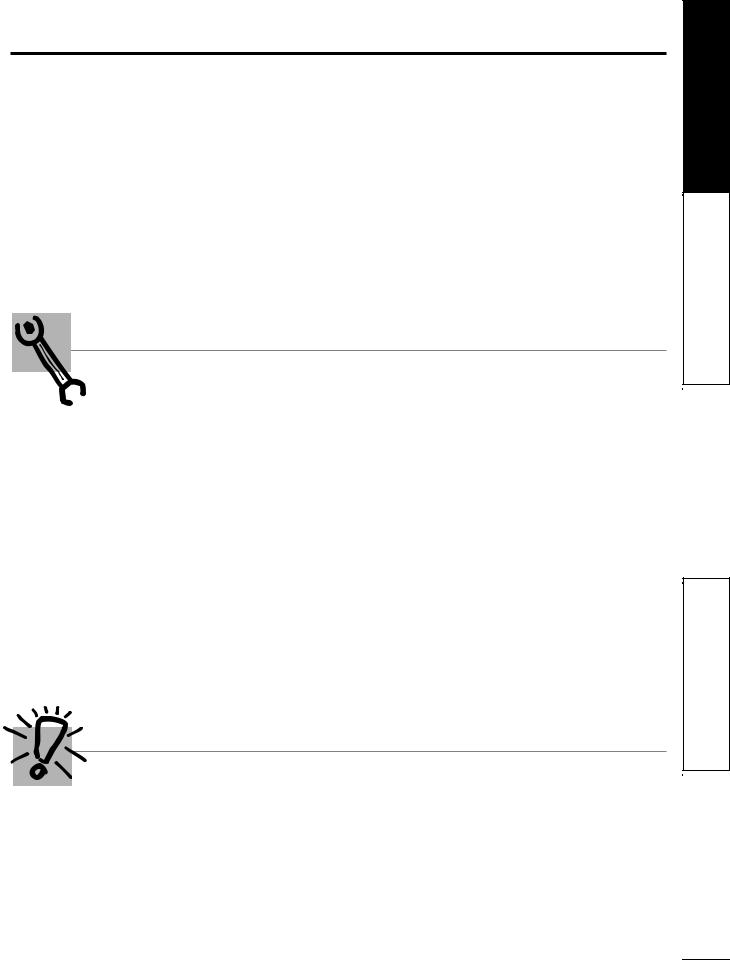
■Do not use the oven for a storage area. Items stored in an oven can ignite.
■Do not leave paper products, cooking utensils or food in the oven when not in use.
■After broiling, always take the broiler pan out of the range and clean it. Leftover grease in the broiler pan can catch on fire the next time you use the pan.
■Do not use aluminum foil to line oven bottoms, except as suggested in this manual. Improper installation of aluminum foil may result in a risk of electric shock or fire.
■Clean only parts listed in this Owner’s Manual.
PREPARATION
Installing
Your range, like many other household items, is heavy and can settle into soft floor coverings such as cushioned vinyl or carpeting. When moving the range on this type of flooring, use care, and it is recommended that these simple and inexpensive instructions be followed.
The range should be installed on a 1/4″ thick sheet of plywood (or similar material) as follows: When the floor covering ends at the front of the range, the area that the range will rest on should be built up with plywood to the same level or higher than the floor covering. This will allow the range to be moved for cleaning or servicing.
Leveling
Leveling screws are located on each corner of the base of the range. Remove the bottom drawer and you can level the range on an uneven floor with the use of a nutdriver.
To remove the drawer, pull the drawer out all the way, tilt up the front and take it out. To replace the drawer, insert glides at back of the drawer beyond stop on the range glides. Lift drawer if necessary to insert easily. Let the front of drawer down, then push in to close.
One of the rear leveling screws will engage the Anti-Tip device. Allow for some side to side adjustment. Allow a minimum clearance of 1/8″ between the range and the leveling screw that is to be installed into the Anti-Tip device.
Read and follow this Safety Information carefully.
SAVE THESE INSTRUCTIONS
7
<![endif]>Service Customer Tips Troubleshooting Cleaning and Care Instructions Operating Instructions Safety

<![endif]>Customer Service Troubleshooting Tips Care and Cleaning Operating Instructions Safety Instructions
Using the surface units.
Throughout this manual, features and appearance may vary from your model.
Be sure you turn the control knob to OFF when you finish cooking.
How to Set
Push the knob in and turn in either direction to the setting you want.
At both OFF and HI the control clicks into position. You may hear slight clicking sounds during cooking, indicating the control is keeping the power level you set.
A surface unit ON indicator light will glow when any surface unit is on.
1″
Not over 1 inch.
Surface Cookware Tips (electric coil models only)
Use mediumor heavy-weight cookware. Aluminum cookware conducts heat faster than other metals. Cast-iron and coated cast-iron cookware are slow to absorb heat, but generally cook evenly at low to medium heat settings. Steel pans may cook unevenly if not combined with other metals.
For best cooking results, pans should be flat on the bottom. Match the size of the saucepan to the size of the surface unit.
The pan should not extend over the edge of the surface unit more than 1 inch.
Wok Cooking (electric coil models only)
We recommend that you use only a flat-bottomed wok. They are available at your local retail store.
Do not use woks that have support rings. Use of these types of woks, with or without the ring in place, can be dangerous.
Placing the ring over the surface unit will cause a build-up of heat that will damage the porcelain cooktop. Do not try to use such woks without the ring. You could be seriously burned if the wok tipped over.
Use only flat-bottomed woks.
Temperature Limiter (glass cooktops only)
Every radiant surface unit has a temperature limiter.
The temperature limiter protects the glass cooktop from getting too hot.
The temperature limiter may cycle the units off for a time if:
■The pan boils dry.
■The pan bottom is not flat.
■The pan is off center.
■There is no pan on the unit.
|
Deep Fat Frying |
|
Do not overfill cookware with fat that may |
|
spill over when adding food. Frosty foods |
|
bubble vigorously. Watch food frying at |
8 |
high temperatures. Keep range and hood |
clean from grease. |
